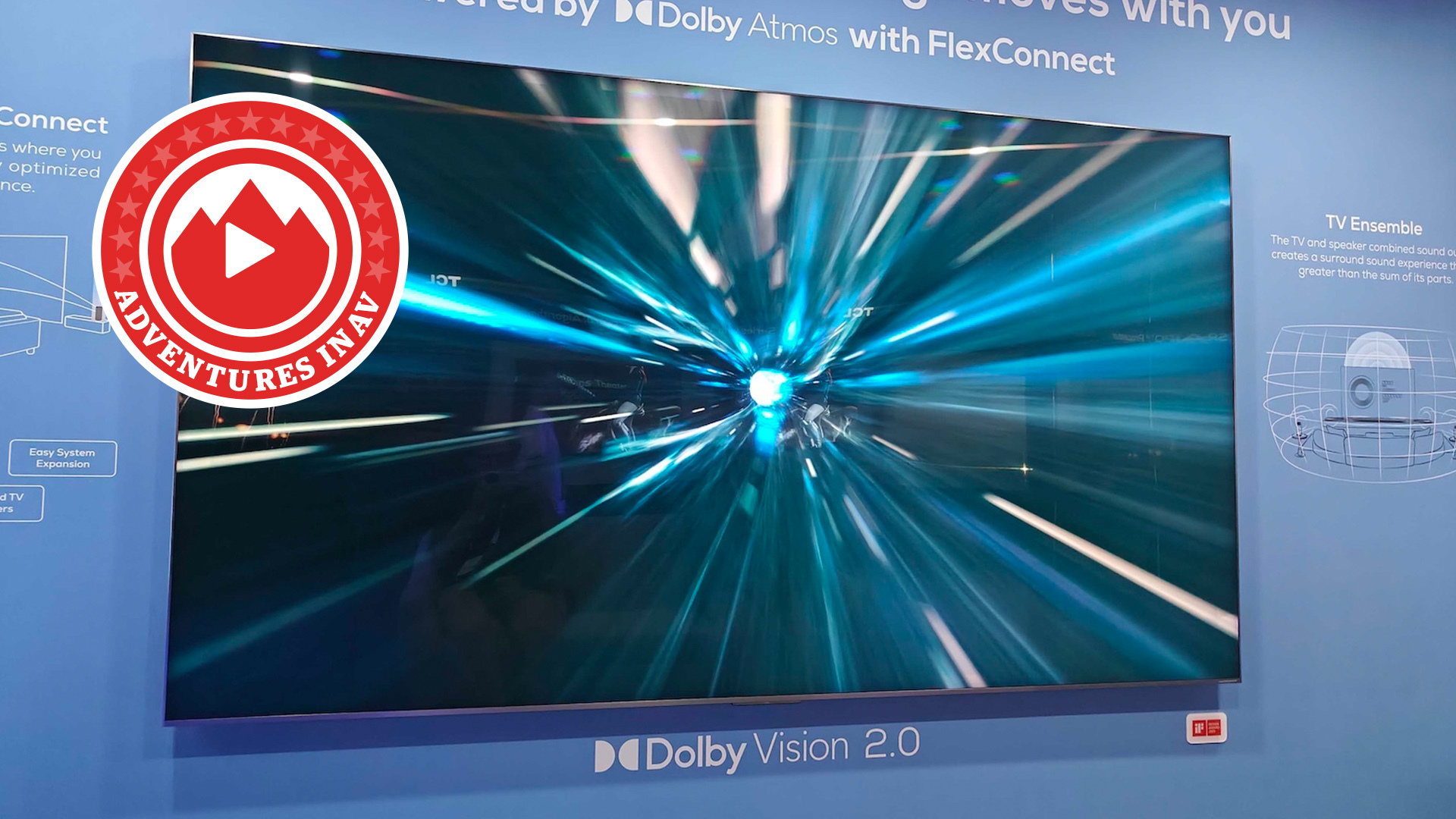What Hi-Fi? Verdict
Limited viewing angles aside, this 24-inch Toshiba TV is much better than the price suggests
Pros
- +
Balanced, engaging picture
- +
Good value
- +
Simple operating system
Cons
- -
Missing a few key streaming apps
- -
Sound isn’t very powerful
- -
Very limited viewing angles
Why you can trust What Hi-Fi?
There isn’t anything about the Toshiba 24WK3C63DB that instantly jumps out at you (apart from its almost bizarrely forgettable model name).
It’s cheap without being the cheapest 24-inch TV in town. It looks decent and is reasonably well built without being the prettiest or most robustly designed small TV we’ve seen. It’s well-featured without delivering absolutely everything a small TV ideally should.
And yet, we’ve ended up developing rather a soft spot for it.
Price
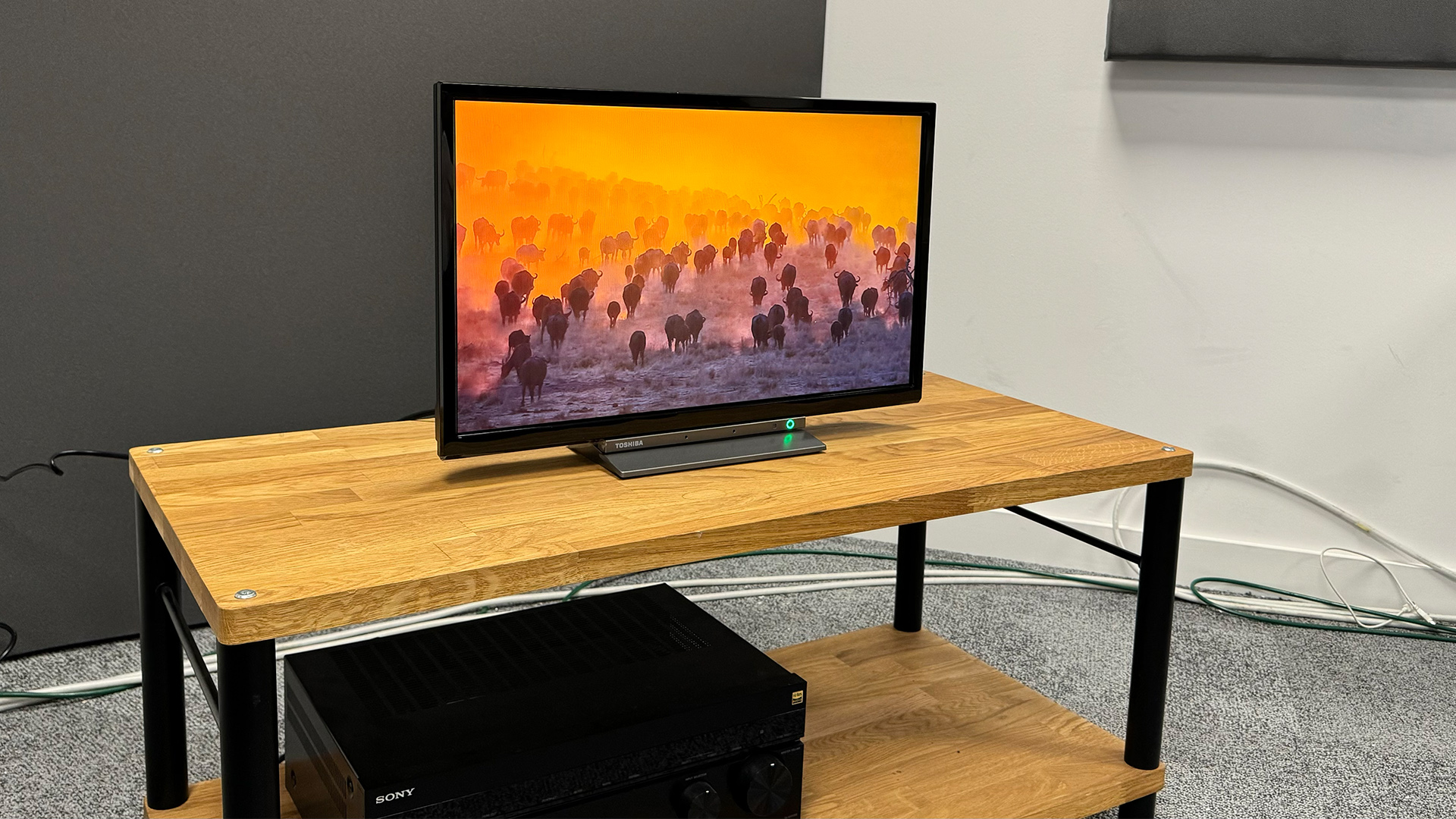
The Toshiba 24WK3C63DB isn’t the cheapest 24-inch TV. There are sets around from the likes of Sharp, JVC and Blaupunkt (all of which are, literally, no longer the brands they used to be) that cost quite a bit less than the 24WK3C63DB’s £139 price of entry.
There are also, though, plenty of 24-inch TVs that cost much more, including Samsung’s recently reviewed UE24N4300. And by the time you’ve added the 24WK3C63DB’s thoughtful picture performance into the equation, £139 starts to look like really good value.
Note that Toshiba TVs aren’t sold in the US, and that while the model was once sold in Australia, it seems as if the UK and Germany are now the only territories where it’s still readily available.
Design

The 24WK3C63DB is better looking than most small TVs. The frame around its screen is quite compact by 24-inch TV standards, and its mildly glossy black finish contrasts neatly with the dark metallic grey of the included plate-style desktop foot. Both the screen and its mount look and feel reasonably well built, too – not as ultra sturdy as the Samsung UE24N4300, but certainly more robust than the featherweight feel of the 24-inch RCA Roku TV, a review of which we will be publishing very soon.
The latest hi-fi, home cinema and tech news, reviews, buying advice and deals, direct to your inbox.
The 24WK3C63DB ships with a single flimsily built remote control. Despite its uninspiring build quality, though, this handset actually turns out to be quite well laid out and easy to use.
Features
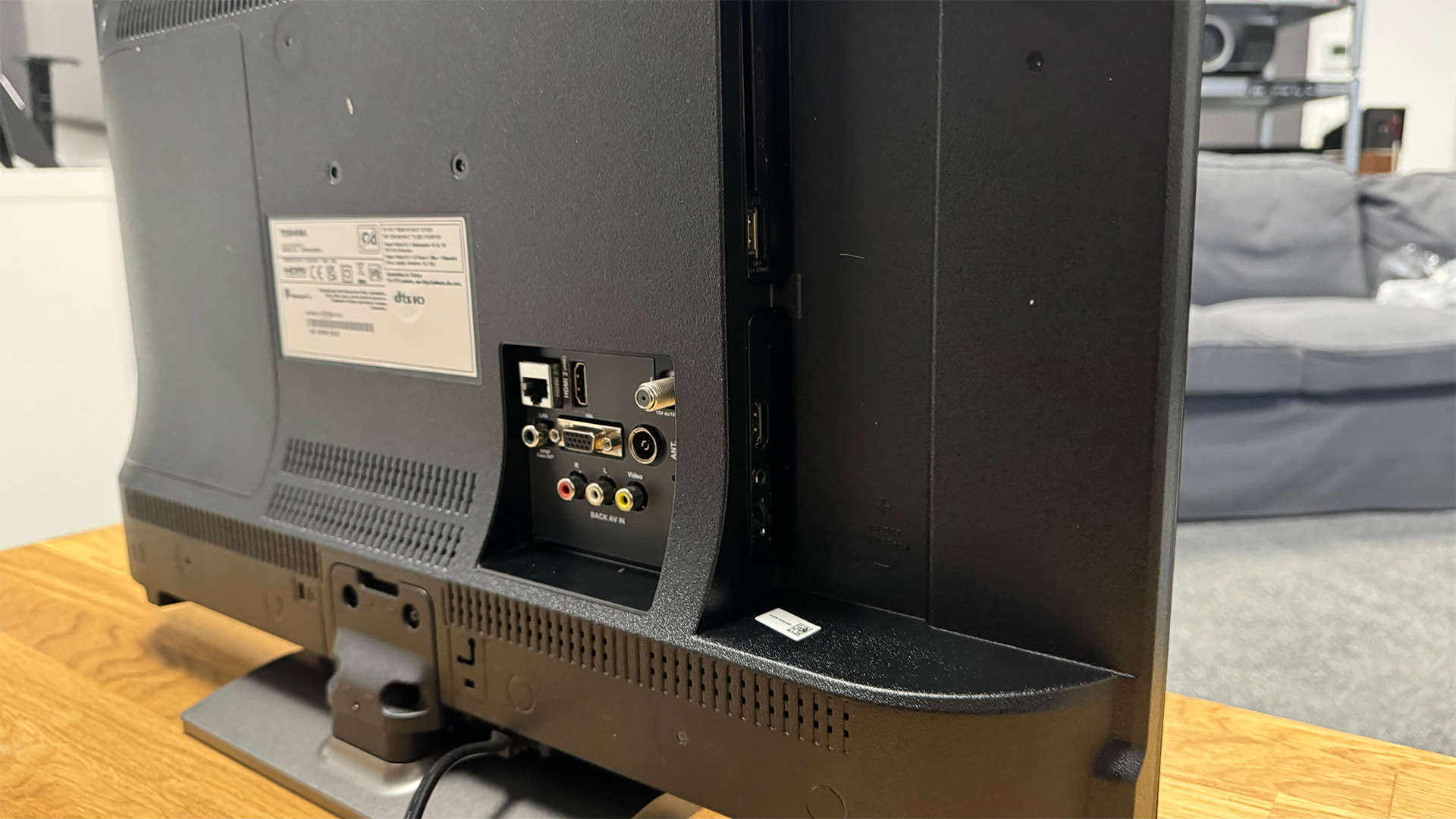
As with the Samsung and RCA 24-inch TVs mentioned, the 24WK3C63DB uses a VA panel with standard (as in, there’s no local dimming) backlighting. It sports a native HD Ready resolution of 1280x720 pixels and, surprisingly, supports high dynamic range playback in the HDR10 and HLG formats. There’s no playback of the premium Dolby Vision or HDR10+ HDR formats – these default to simple HDR10 – but any sort of HDR support on a 24-inch TV must count as a bonus. Provided it doesn’t look like a dog’s dinner, anyway.
Another sign that Toshiba is trying to be quite ambitious with the 24WK3C63DB’s picture quality is the presence of a couple of the brand’s proprietary picture processing systems: Tru Resolution for enhancing sharpness, and Tru Micro Dimming, which analyses the image in small blocks to better optimise the screen’s picture settings frame-by-frame.

Type LCD (VA)
Backlight Direct LED
Resolution 1280 x 720
HDR formats HLG, HDR10
Operating system Toshiba
HDMI inputs x 2
Gaming features None
ARC/eARC ARC
Optical output? No
Dimensions (hwd, without stand) 33 x 55 x 6.3cm
The 24WK3C63DB’s connections only provide two HDMIs rather than the three sported by the RCA Roku TV, but these twin HDMIs are backed up pretty well by a USB port, a VGA PC port that can also be used for component video, an Ethernet network port, a composite video input (these sorts of legacy video connections are still a hit with 24-inch buyers, it seems), a headphone jack and, of course, an RF port to feed the built-in Freeview HD tuner.
The HDMIs don’t support any of today’s advanced gaming features, such as 4K/120Hz or VRR, but nor would we expect them to. At least the 24WK3C63DB does a pretty good job of not ruining your Call Of Duty skills by hitting a pretty reasonable 32.8ms of input lag when set to its Game picture mode.
The 24WK3C63DB’s smart features initially impress. The interface superimposes app links over the bottom of the picture you’re watching rather than the home screen taking over the whole screen, which is a nice throwback to a simpler smart TV time. The menu structure is really clever in how it gives you access to the TV’s features without eating into much screen real estate, too. There are some direct app access buttons on the remote too, and you can easily re-order the apps on the OSD so that your favourites appear first.
There’s also built-in support for Amazon Alexa voice control, as well as Miracast so you can share your smart device’s screen with the TV.
The only pity – and it’s a significant one – is that the roster of apps supported by the 24WK3C63DB doesn’t include Disney+ or Apple TV. There’s Netflix, Prime Video, Freeview Play (complete with the catch-up apps for all the big UK terrestrial TV broadcasters), Britbox, YouTube and plenty more besides. But if you’re one of the large number of households invested in Disney+ or Apple TV subscriptions, you’ll have to rely on an external device to play those on this Toshiba TV.
Picture
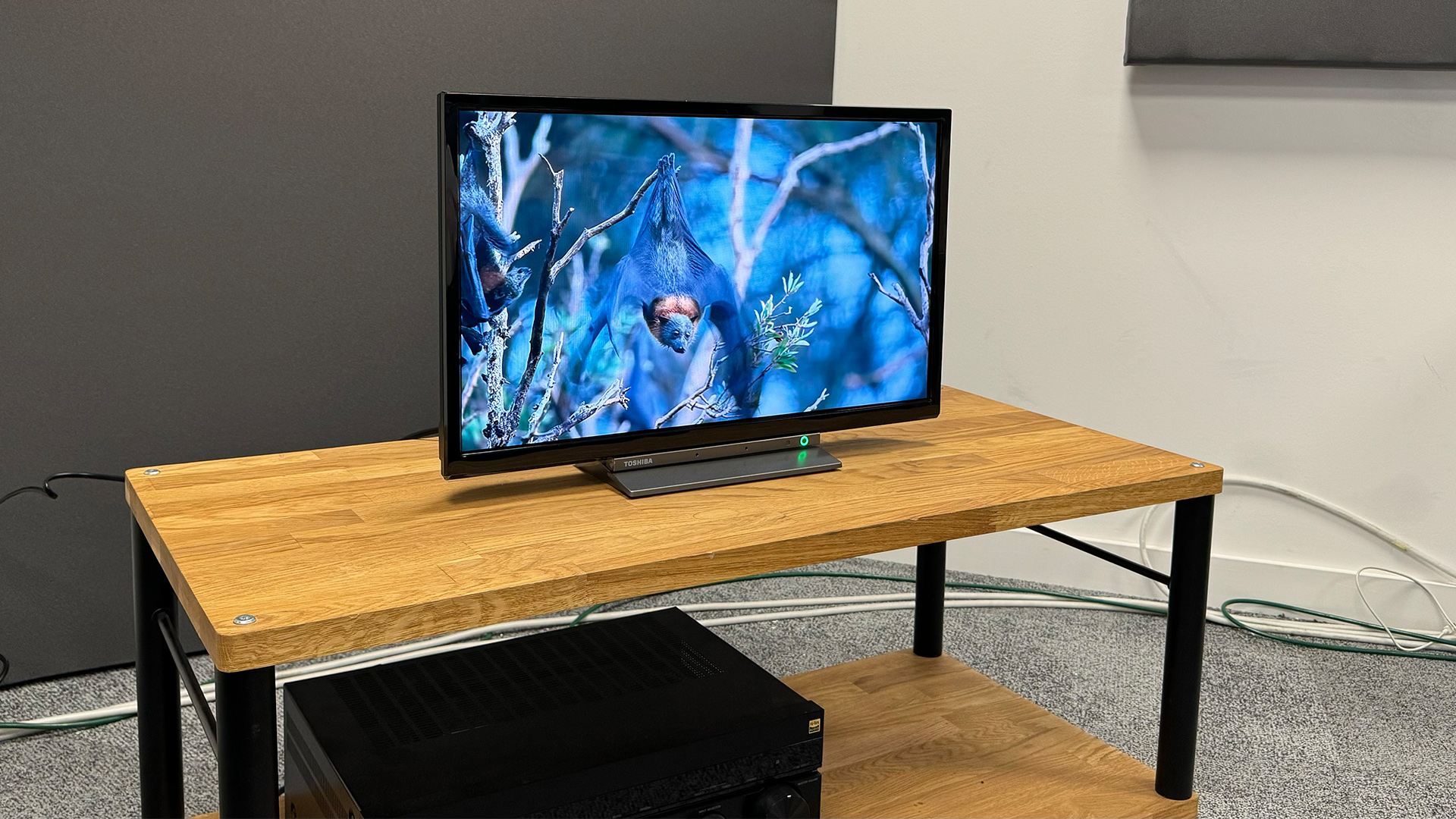
Provided you’re able to sit almost directly opposite its screen, the 24WK3C63DB is a very effective picture performer. We mention the 'directly opposite the screen' thing right away, though, because it really is an unusually big deal with Toshiba’s set. Any TV that uses a VA panel will lose colour and contrast if watched from much of an angle, but the angles you can watch the 24WK3C63DB from before the picture quality is affected are really exceptionally limited.
Viewed head-on, though, the 24WK3C63DB has more than a few pleasant surprises up its sleeve. Its contrast performance, for instance, is excellent by small-screen TV standards. Its deepest black levels might not be quite as deep or natural as those of the Samsung UE24N4300, but they’re significantly better than those of the RCA 24-inch Roku TV and seldom cause you to be distracted from what you’re watching.
At the other end of the light spectrum, while it doesn’t get quite as bright as the RCA Roku model (despite that model not joining this Toshiba in supporting HDR) the 24WK3C63DB is much brighter than the Samsung. So overall it delivers a marriage of good brightness and black levels that helps both SDR and HDR content enjoy a really balanced and eye-catching look that holds up well in both dark and light room settings.
The natural feel to dark scenes is enhanced, too, by the 24WK3C63DB’s ability to pick out lots of shadow detail in dark areas, rather than crushing it out or greying it over as many budget TVs do.
The 24WK3C63DB’s colour handling is its best attribute, though. With small-screen TVs these days, especially at the more affordable end of the market, colours can tend to look either pale or gaudy, without much subtlety and naturalism in between. This Toshiba, though, achieves a colour range wide enough to deliver at least a little extra impact with HDR content while also being subtle enough to ensure that heavily textured areas never look clumpy or soft.
Skin tones are delivered with enough nuance and clarity to avoid the plasticky look all too many small screen TVs suffer with to some extent when showing flesh, and wider tones are consistently realistic and believable. There are none of the frankly weird hues and ‘black and white’ moments that the Samsung UE24N4300 suffers from when trying to show HDR.
The balance of the 24WK3C63DB’s colours is a credit to such an affordable TV too, with no hues drawing too much attention to themselves.
With a good sense of sharpness and detail to add to its mix of colour subtlety and balance, the 24WK3C63DB also delivers a more effective sense of depth than we’d expected to ever see from such a small TV.
The 24WK3C63DB’s very limited viewing angles aren’t its only picture limitation, though. Very dark scenes can reveal some faint clouding from the backlight, and motion looks slightly softer than it does on the RCA Roku TV (though it also looks much crisper than motion on the Samsung 24N4300).
Its niggles, though, don’t stop the 24WK3C63DB from ultimately producing more immersive and engaging pictures than you may well have thought possible from a TV of such diminutive proportions.
Sound
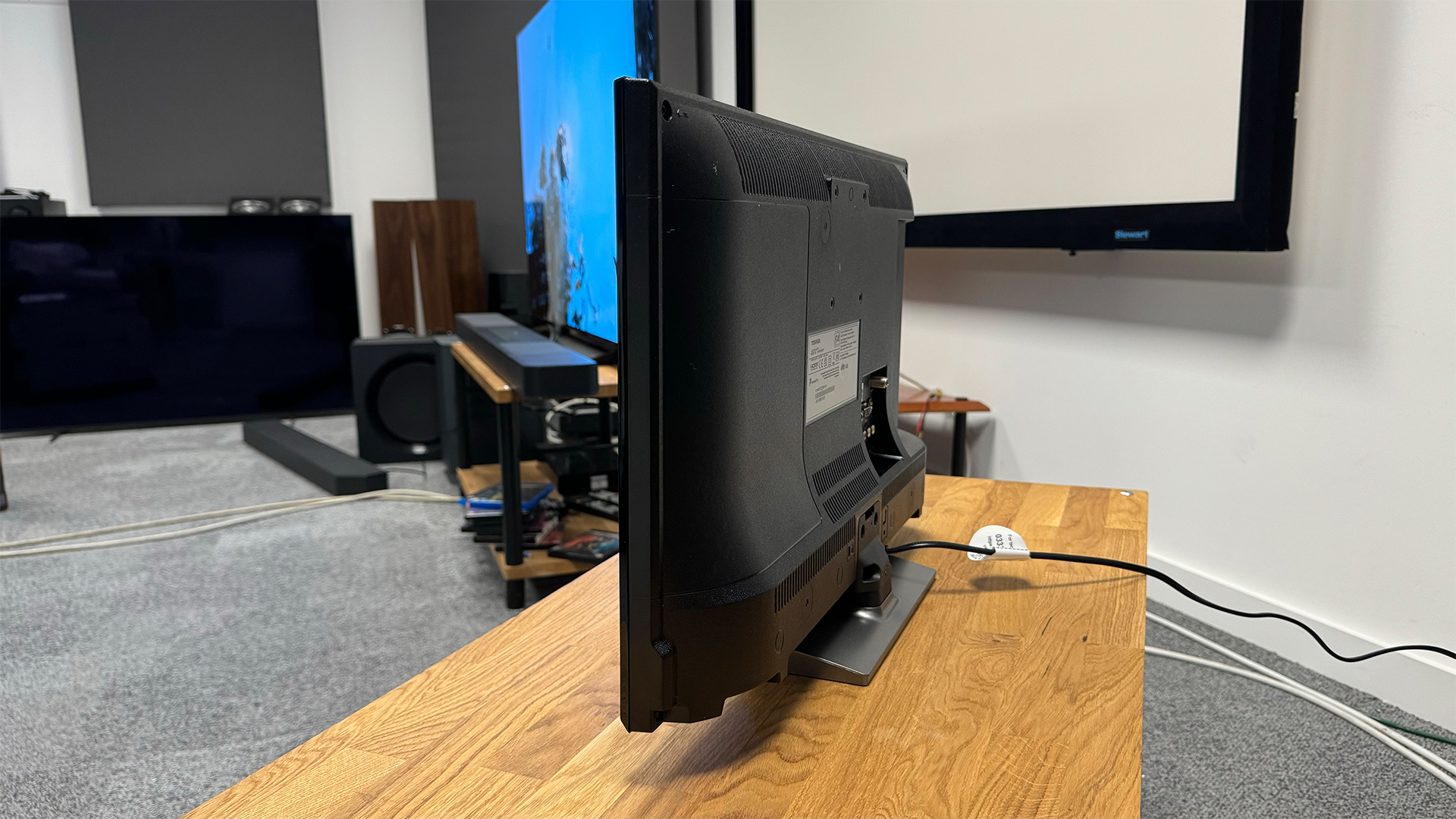
The 24WK3C63DB’s audio isn’t as impressive as its pictures. Chiefly because it joins many of its small-screen rivals in not being able to get very loud or deliver much in the way of bass. This lack of bass means action scenes sound a bit thin and shrill, while the lack of power denies the sound any significant projection either forward or sideways, compounding the sound’s somewhat ‘trapped in’ feel.
It’s not all bad news, though. The speakers typically sound quite crisp and clean, and they remain free of distortion and dropouts with all but the most truly extreme soundtrack moments. Dialogue is always intelligible too – even if those speaking tend to sound a bit small.
Verdict
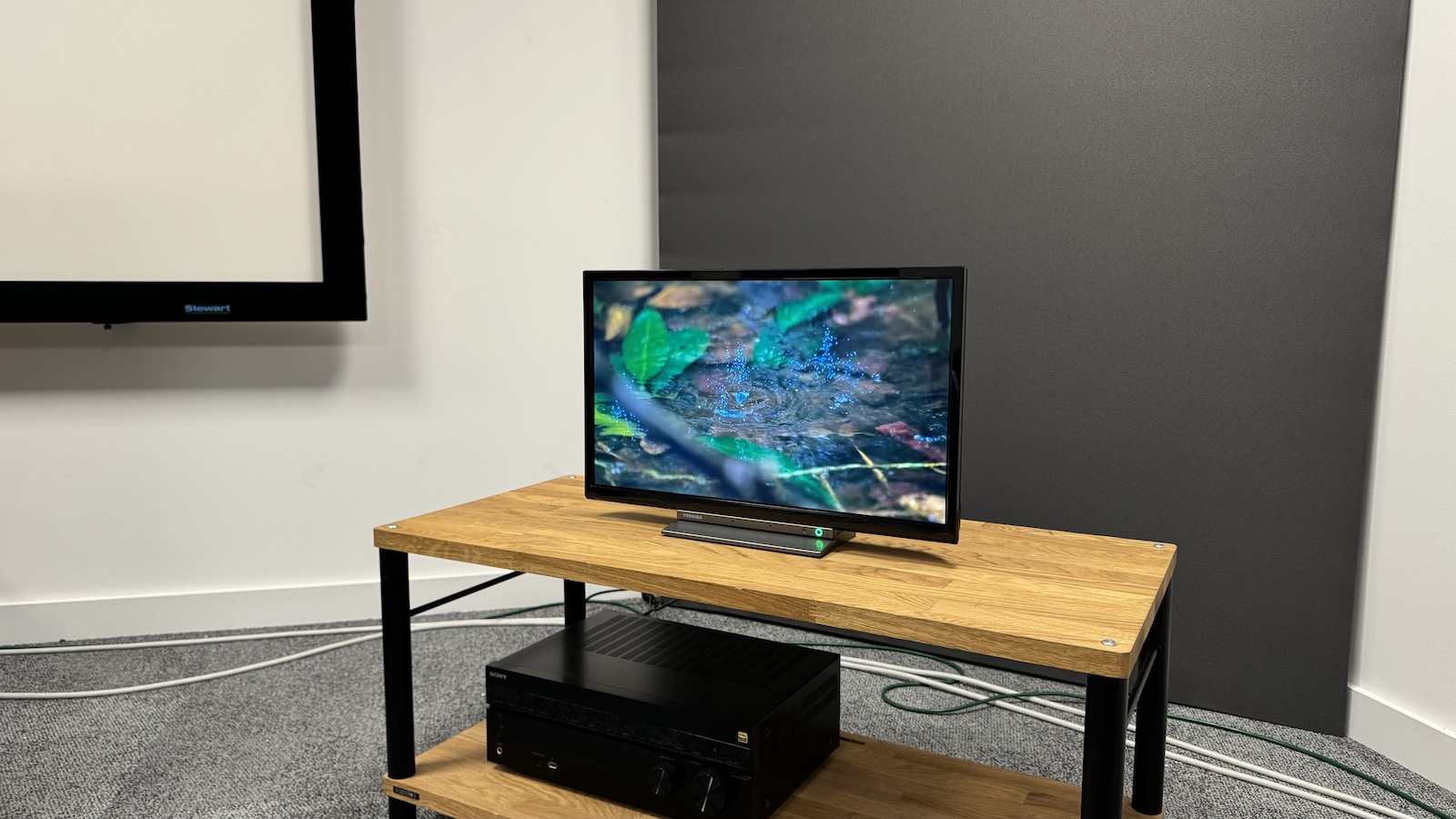
While the Toshiba 24WK3C63DB doesn’t do anything flat-out spectacular and requires you to work around extremely limited effective viewing angles, it also shows more sensitivity towards and appreciation for all-round picture balance, finesse and consistency than any of its small-screen rivals. The result is a TV that’s far more immersive to watch than a TV this small and cheap has really any right to be.
SCORES
- Picture 4
- Sound 3
- Features 3
MORE:
Read our review of the Samsung UE24N4300
Also consider the Amazon QL43F601
Best TVs: flagship OLEDs and affordable flatscreens tried and tested
John Archer has written about TVs, projectors and other AV gear for, terrifyingly, nearly 30 years. Having started out with a brief but fun stint at Amiga Action magazine and then another brief, rather less fun stint working for Hansard in the Houses Of Parliament, he finally got into writing about AV kit properly at What Video and Home Cinema Choice magazines, eventually becoming Deputy Editor at the latter, before going freelance. As a freelancer John has covered AV technology for just about every tech magazine and website going, including Forbes, T3, TechRadar and Trusted Reviews. When not testing AV gear, John can usually be found gaming far more than is healthy for a middle-aged man, or at the gym trying and failing to make up for the amount of time he spends staring at screens.

